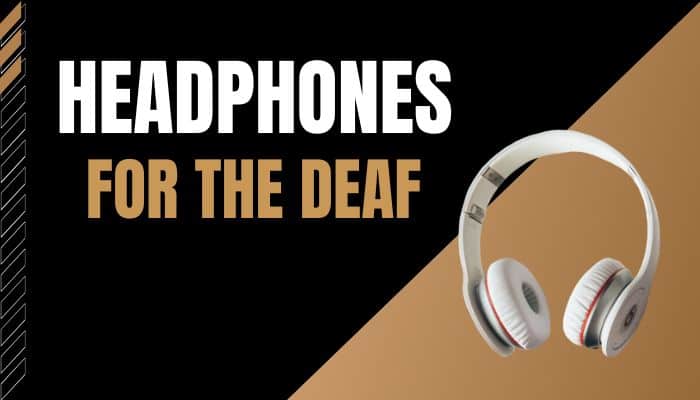When we think of headphones, it’s easy to associate them with the act of listening to music, tuning into a podcast, or engaging with an audiobook. But how do headphones serve individuals who are deaf or hard of hearing? You may be surprised to know that modern technology has paved the way for specialized headphones tailored to the needs of the deaf community. This post delves into the groundbreaking advancements in headphones for the deaf and how they are bridging the gap in communication and entertainment.
How Revolutionizing Communication: Headphone Innovations for the Deaf
Understanding the Needs
Before diving into the technology, it’s crucial to understand that ‘deafness’ is not a one-size-fits-all term. The spectrum of hearing loss ranges from mild to profound, and what might work for one individual might not work for another. Therefore, when designing or selecting the best headphones for deaf people, it’s essential to consider the diverse needs of the user.
Bone Conduction Technology
The most remarkable advancement in headphones for the deaf people is the use of bone conduction technology. Unlike traditional headphones that transfer sound through the air into the ear canal, bone conduction headphones bypass the eardrum altogether. They rest on the cheekbones or forehead and transmit sound through vibrations directly to the inner ear or cochlea. This technology is especially useful for individuals with conductive hearing loss (where there is a problem with the ear canal or eardrum) as it bypasses these structures altogether.
Enhanced Vibrations and Tactile Feedback
For individuals with profound hearing loss, sound might not be perceptible, even with bone conduction. In such cases, the experience can be conveyed through enhanced vibrations and tactile feedback. Some headphones are designed to provide a stronger vibrational feedback based on the beats and rhythms of music or sounds. This allows the user to ‘feel’ the music or dialogue rather than traditionally hearing it.
Visual and Haptic Alerts
Many headphones designed for the deaf also come with visual or haptic alerts. This is particularly useful for practical applications like receiving call notifications, alarms, or emergency signals. The headphones can vibrate or flash lights to notify the user of specific events. This integration ensures that the user is always in the loop, even in sound-dominated settings.
Integration with Hearing Aids
With many individuals in the deaf community using hearing aids, it’s essential for headphones to be compatible with these devices. Many modern headphones for the deaf are designed to work seamlessly with hearing aids, ensuring that the user gets the best experience without any interference. This is achieved either through telecoil compatibility or by designing headphones that can comfortably be worn over hearing aids.
Emotional and Social Benefits
While the functional advantages of these headphones are evident, it’s worth noting the emotional and social benefits they bring. For many deaf individuals, experiencing music or even the nuances of a conversation can be profoundly isolating. These headphones offer a sense of inclusion, allowing them to be part of auditory experiences they may have thought were forever beyond their reach.
Personalization and Sound Adjustment
Not all sound frequencies are lost in individuals with hearing impairment. Some might have difficulty with high-pitched sounds, while others might struggle with lower tones. Headphones tailored for the deaf often come with sound adjustment features. This allows users to amplify the frequencies they struggle with and lower the ones they can hear well, creating a customized listening experience.
Challenges and the Road Ahead
While these advancements are remarkable, it’s essential to acknowledge that no technology can fully replicate the human experience of hearing. Moreover, affordability can be a barrier. High-tech solutions often come with hefty price tags, making them inaccessible to a large portion of the population.
Yet, the future looks promising. With continued research and increasing awareness about the needs of the deaf community, we can hope for even more innovative solutions. Tech giants and startups alike are investing in research to create headphones that cater to the specific needs of the deaf and hard of hearing.
Related article, The 12 Trendy Power Tools
Final Thoughts
The world of headphones for the deaf is a testament to how technology can adapt and evolve to cater to every individual’s needs. While challenges remain, the advancements in this field are bringing hope and improved quality of life to many. Whether it’s through bone conduction, vibrations, or integration with hearing aids, these headphones are ensuring that the deaf community is no longer left out of the auditory experiences many of us take for granted. Through continued innovation and understanding, the bridge between sound and silence is becoming shorter, one vibration at a time.
